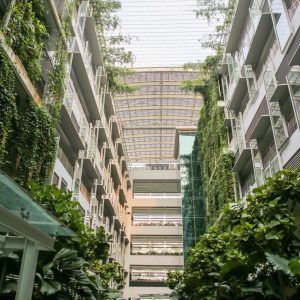Singapore’s Urban Development and Ecosystem Services
June 8, 2020

From 23 to 25 June 2008, Singapore hosted the first World Cities’ Summit, which focused on the development of sustainable cities. The event has since become a biennial conference, jointly organized by the Centre for Livable Cities and the Urban Redevelopment Authority of Singapore, with more than 122 leaders from 117 cities around the world in attendance at its 2018 iteration.
In ‘Singapore as a long-term case study for tropical urban ecosystem services’ (Urban Ecosystems, 2016), Associate Professor Daniel Friess from the NUS Department of Geography presents an in-depth study of Singapore’s urban planning over the years. Tracing Singapore’s developmental trajectory, A/P Friess examines four specific time frames—pre-Independence, post-Independence, contemporary (2000-2016), and future (2017-2061). He highlights Singapore’s ‘Garden City’ vision which emerged in 1967 and goes into details of cultural, watershed protection and microclimate regulation ecosystem services following this direction of urban planning and policy making. Addressing Singapore’s limitations in natural resources, exacerbated by the city’s rapid growth and increasing population, A/P Friess emphasizes the importance of these ecosystem services to provide basic necessities and physical well-being to the people as well as economic benefits to the country.
As a nation that has incorporated ecosystem services into large-scale planning, A/P Friess notes how Singapore has established its own City Biodiversity Index, a new framework that evaluates urban biodiversity, ecosystem services, and conservation efforts, which has since been implemented in many other cities globally. The study is thus important in presenting Singapore as a unique and alternative case study in a research field that has been dominated by a focus on temperate ecosystem services in western urban locations, a national model that may provide insight into future development of contemporary global cities.
Read the full article here.
